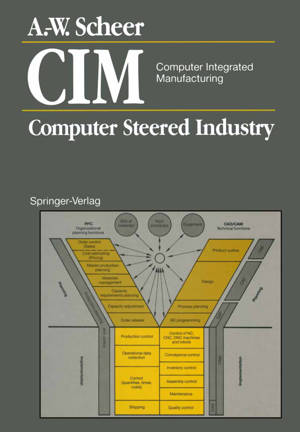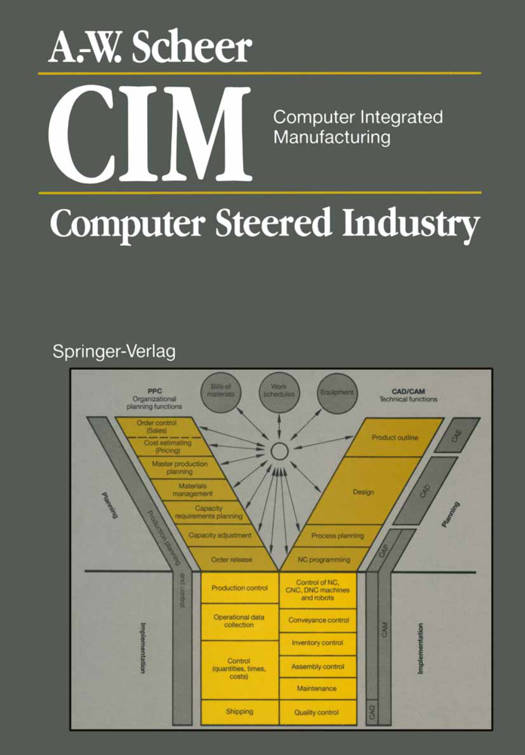
Door een staking bij bpost kan je online bestelling op dit moment iets langer onderweg zijn dan voorzien. Dringend iets nodig? Onze winkels ontvangen jou met open armen!
- Afhalen na 1 uur in een winkel met voorraad
- Gratis thuislevering in België vanaf € 30
- Ruim aanbod met 7 miljoen producten
Door een staking bij bpost kan je online bestelling op dit moment iets langer onderweg zijn dan voorzien. Dringend iets nodig? Onze winkels ontvangen jou met open armen!
- Afhalen na 1 uur in een winkel met voorraad
- Gratis thuislevering in België vanaf € 30
- Ruim aanbod met 7 miljoen producten
Zoeken
CIM Computer Integrated Manufacturing
Computer Steered Industry
August-Wilhelm Scheer
Paperback | Engels
€ 52,95
+ 105 punten
Uitvoering
Omschrijving
Modern information technology has opened up new possibilities of flexibilization and cost reduction in production. The author defines CIM - Computer Integrated Manufacturing - as a concept for the structuring of industrial enterprises. Manufacturing technologies demand a CIM concept which can be realized through the capabilities of information processing available today. The idea of integrating different areas of CIM, such as production planning and control (PPC), computer aided design (CAD) and computer aided manufacturing (CAM), is explained through operating chains and put into a CIM architecture based on a hierarchy of EDP systems. The stance taken in this book of defining CIM as a total concept for industrial enterprises is increasingly gaining ground. The book does not aim to put the functional details of the individual CIM components (PPC, CAD, CAP and CAM) in the foreground, but rather to emphasize the integration principles for the functional demands of the individual components. This book appeared in the Federal Republic of Germany in 1987, and within one year it had run to three editions. The author contributes to this book not only his scientific knowledge but also his experience as a consultant for implementing CIM concepts.
Specificaties
Betrokkenen
- Auteur(s):
- Uitgeverij:
Inhoud
- Aantal bladzijden:
- 200
- Taal:
- Engels
Eigenschappen
- Productcode (EAN):
- 9783642971075
- Verschijningsdatum:
- 23/01/2012
- Uitvoering:
- Paperback
- Formaat:
- Trade paperback (VS)
- Afmetingen:
- 170 mm x 244 mm
- Gewicht:
- 349 g

Alleen bij Standaard Boekhandel
+ 105 punten op je klantenkaart van Standaard Boekhandel
Beoordelingen
We publiceren alleen reviews die voldoen aan de voorwaarden voor reviews. Bekijk onze voorwaarden voor reviews.











